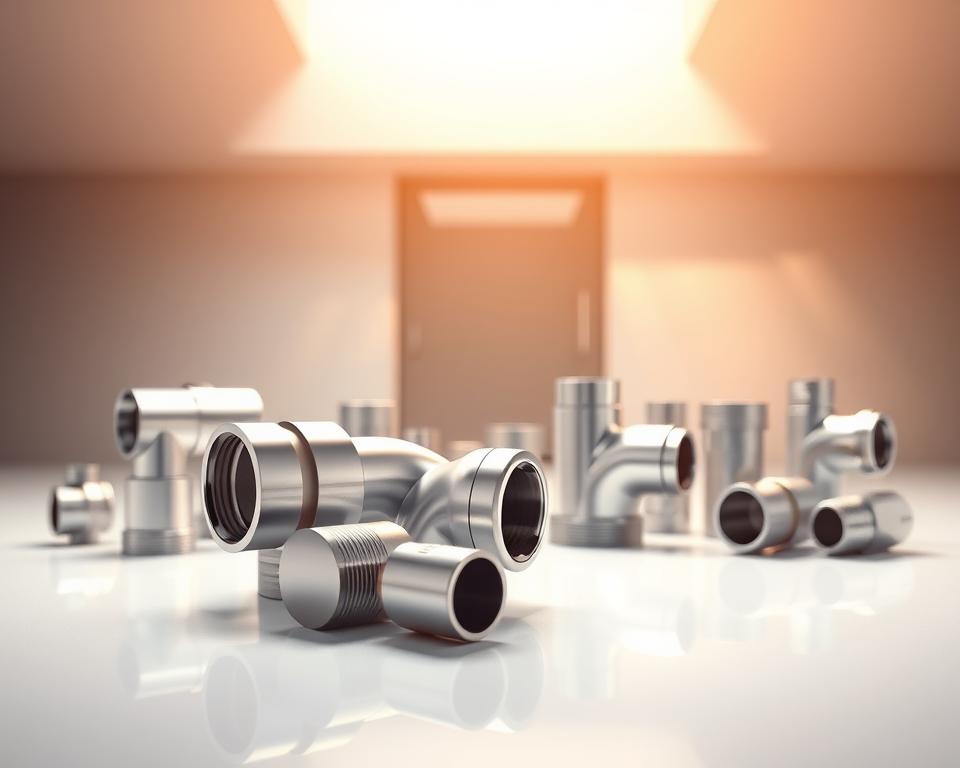Original Designer Furniture Hong Kong for Elegant Estates
How do you turn a home into a lavish sanctuary? It’s all in the details—curated pieces that blend modern aesthetics with timeless craftsmanship. At Stockroom, we bring this vision to life, delivering top-tier collections that transform elegance.
Featuring spaces in Wan Chai and Mong Kok, Stockroom stands as the leading luxury hub. View over 358 thoughtfully selected products, sold in-store or online. Exclusive VIP options offer custom-crafted marble tables and personalized upholstered sofa beds fitting your signature style.
For those in Wan Chai, enjoy the convenience of same-day delivery within a 3km radius. Enhance your living space with Dining Chair Hong Kong, as each item narrates a tale of refinement and excellence.
Primary Conclusions
- Stockroom serves as an elite luxury venue, operating in both Wan Chai and Mong Kok.
- Unique offerings unite new-age design and traditional craftsmanship.
- Discover 358 thoughtfully selected products in our showroom or online.
- VIP package provides custom-crafted marble tables and individually upholstered sofa beds.
- Same-day drop-off applies to Wan Chai residents within 3km.
Getting Started with Designer Furniture in Hong Kong
Hong Kong remains a lively hotspot for groundbreaking decor ideas. The locale fuses old-world charm and new-age aesthetics, forming a special arena for sophistication and imagination. For a decade and a half, Stockroom has driven this movement, selecting European-caliber furniture that reimagines elegance.
Our Wan Chai and Mong Kok locations feature various design genres. Be it Modern Vintage, Industrial Loft, or Scandinavian Minimalism, we have options for all tastes. All collections are constructed carefully for aesthetic appeal and lasting strength.

We’re delighted to reveal next-gen materials such as scratch-defiant ceramic table surfaces. These developments unite purpose and elegance, suited to modern residences. Whether you’re redecorating or starting fresh, our collections offer endless possibilities.
If you want a bespoke accent, our VIP design consults are at your service. Our design team cooperates with you to fashion spaces showcasing your singular vision. Stop by Stockroom and discover the craft of elite home embellishment.
Elite Dining Table Selections
Upgrade dining moments via premium tables blending design and utility. Stockroom provides distinct designs crafted to render each dinner unforgettable. We present the bestselling ten-person solid oak table complete with butterfly leaf extensions for additional adaptability. Selling for $51,380–$72,780, it remains a durable home commitment.
For fans of modern flair, our extendable marble table shines. Listing at $42,380 along with an 18-month protection, it ensures calm satisfaction. Whether you’re hosting a dinner party or enjoying a family meal, these tables are built to impress.
Opting for circular or rectangular tables hinges on area and aesthetic preferences. Round tables generate intimacy, fitting well in petite areas. Rectangular tables, on the other hand, offer ample seating and a classic look. Both options are available in our collection, catering to diverse preferences.
Upkeep of your high-end table is easy but important. Buff with a soft tissue on wood surfaces, excluding aggressive chemicals. For marble tops, periodic sealing preserves their flawless finish. These care tips ensure your table remains a centerpiece for years to come.
Getting a superior table is effortless with our funding solutions. Should you buy over HK$30,000, we provide adaptable payment arrangements to align with your budget. Visit Stockroom today and find the perfect dining table to improve your home.
Polished Sofas for Your Living Room
Uncover the ultimate mix of relaxation and fashion in our selected sofa range. Whether needing a standout or a useful fixture, our sofas work to upgrade your living area.
The three-seat Italian leather sofa is beloved by many. It features built-in USB charging ports, making it ideal for modern lifestyles. The elegant silhouette and high-end fabrics make it a room-worthy standout.
Pet-friendly households enjoy our stain-defying covers that endure use and wipe off quickly. After prolonged use, these covers keep their crisp appearance, perfect for lively homes.
Within our Stockroom furniture range, you’ll find space-efficient sleeper sofas. Incorporating memory foam cushioning, these sleeper sofas give remarkable comfort to guests. Great for limited-space environments, these units blend usefulness and fashion.
As for padding, pick duck down or high-performance foam. Duck down delivers a soft, lavish sensation, while resilient foam supplies solid support. Each choice aims to hold form for years.
| Cushion Filling |
Features |
Best For |
| Feather Fill |
Cushiony, indulgent sensation |
Those craving luxury seating |
| High-Resiliency Foam |
Firm support, durable |
Practical users |
Make the most of our existing showroom piece markdowns, slashing prices by up to 40%. These authentic models remain on offer briefly, so act now to upgrade your lounging space.
Chic Side Tables & Cabinets
Revamp your room with both practical and fashionable pieces that integrate smoothly into your decor. Be it ceramic-topped side tables or industrial-chic metal armoires, our inventory provides multipurpose elegance for all areas.
Nesting tables featuring marble detailing are a prime selection. Every version provides undercover storage, optimal for compact rooms. The slim profile lends refinement as it tucks away your belongings.
Collectors will find our lockable showcase cabinets indispensable. These cases unite protection and sophistication for showcasing prized collectibles. Shatter-resistant glass doors reveal your collection while safeguarding it.
Oenophiles will enjoy our climate-balanced sideboards. Engineered to preserve wine at ideal humidity, these sideboards unite function and sleek design. They make a superb enhancement to dining or lounge spaces.
Wall-hung console tables that conserve space are perfect for smaller dwellings. These tables offer a practical solution without compromising on style. Their uncluttered design integrates with any decor, giving broad adaptability.
Finish your decor with our coordinated living room bundles. Available at a 15% bundle discount, these sets include coordinating side tables and cabinets. Taking a unified strategy creates a balanced and polished atmosphere.
Whether pursuing an attention-grabber or a pragmatic piece, our inventory offers everything. Peruse our refined side tables and cabinets today to elevate your interior styling.
Luxury Light Fixtures to Enhance Your Home
Proper illumination matters in shaping tone and enriching your home’s feel. Stockroom presents upscale fixtures fusing aesthetics and useability to renew any environment.
Our adjustable pendant lights, priced between $6,080 and $8,180, are perfect for creating a focal point in your dining or living area. These adjustable fixtures give height and angle customization to suit your space exactly.
To add a contemporary element, consider our Smart LED setups beginning at $21,180. These mobile-controlled setups include circadian rhythm modes, altering brightness to imitate daytime light. It raises comfort and promotes your daily rhythm.
Looking for a statement piece? Our Murano glass chandeliers with dimmer switches add a touch of elegance to any room. Meticulously crafted, these chandeliers offer both utility and breathtaking aesthetics.
Energy-saving LED solutions are another highlight of our collection. They potentially lower your power bills by nearly 40%, giving a sustainable and economical pick. Combine them with our weatherproof patio lights for a fluid indoor-outdoor flow.
All purchases come with professional fitting services to make certain of precise installation. If you’re refitting or beginning from scratch, Stockroom offers top lighting choices to illuminate your setting.
On-Trend Chairs for All Spaces
Chairs aren’t solely for sitting—they showcase both trend and comfort. Whether equipping a homely sitting area or a modern office, the appropriate chair evolves your space.
Our ergonomic workspace chairs echoing Herman Miller emphasize function and comfort. Selling for $10,480 to $13,880, they have adjustable lower-back comfort and ventilated mesh backs. Great for all-day tasks, these chairs fuse useability with up-to-date design.
To introduce opulence, check out our bouclé leisure chairs paired with ottomans. They suit the creation of a tranquil corner in your abode. The soft texture and neutral tones make them versatile for any decor.
Material selection for dining chairs is significant. Wood supplies a traditional feel, and metal injects a sleek aspect. Conversely, acrylic chairs bring a smooth, minimalistic presence. Every type boasts its own elegance, so opt guided by your style and practical needs.
Outdoor spaces deserve attention too. Stackable outdoor chairs with UV safeguards maintain color through tough climates. Easy to move yet sturdy, they suit balconies or deck spaces perfectly.
Grab our promo: Buy a piece, get another for 50% off on selected ranges. This time-sensitive deal lets you upgrade your space affordably.
- Ergonomically optimized chairs for better performance and ease.
- Bouclé lounge seats plus ottomans for a snug haven.
- Dining chairs in wood, metal, or acrylic to suit your style.
- UV-shielded stackable chairs for the outdoors to withstand the elements.
- Buy one, receive a second at 50% discount for select ranges.
Dining Area Essentials
Shaping a dining room that’s hospitable and sophisticated starts with fundamental items. From a flawless table to modern chairs, every component contributes to a cohesive and luxurious design.
Best table elevations lie between 28″ and 30″ for a comfortable match with many chairs. Use this simple reference to pick the proper pairing:
| Chair Type |
Ideal Table Height |
| Traditional Dining Chairs |
28 inches to 30 inches |
| Bar-Height Stools |
36″-42″ |
| Counter Stools |
24 inches to 26 inches |
Match your table using easy-clean linens from Stockroom’s accessory collection. These coverings offer utility and chicness, making upkeep easy and bringing a refined touch to meals.
For those who love hosting, glassware storage solutions for china cabinets are a must. They maintain your dishware and glassware neat and within reach, making each dining experience memorable.
Complete your look with our 10-piece place settings, available in a variety of designs. These sets include everything you need to create a polished and cohesive table setting, perfect for both everyday meals and special occasions.
Unsure about layout? Our professional planners offer consultation. If you own a loft-style room or a small dining nook, our professionals will devise an arrangement that enhances style and practicality.
From solid oak tables to matching seating, Stockroom delivers all essentials to enhance your dining area. Come by and see the best choices for turning your space around.
Luxury-Defining Materials
The basis of high-end design is in the materials that form it. Beginning with responsibly sourced oak to 304 stainless steel and top-tier marble, each option offers singular traits and strength. Let us examine these choices that embody sophistication and practicality.
Concerning wood, oak, walnut, and teak lead for resilience and visual appeal. Take a look at this short comparison:
| Wood Type |
Durability |
Best Use |
| Solid Oak |
Very High |
Dining tables, credenzas |
| Walnut |
Balanced |
Feature items |
| Solid Teak |
Superior |
Deck furniture |
Antibacterial copper alloy coatings revolutionize frequently used surfaces. They appear polished and also support cleanliness, perfect for kitchens and baths.
Heat-resistant ceramic coatings are another innovation worth considering. Great for kitchen tops, they withstand intense heat and keep a pristine look. Hence they’re functional and fashionable.
Need help picking a material? Use our free sample provision. We send out free samples, giving you the chance to assess material quality before committing.
Subscribers of sustainability adore eco-wise selections like bamboo composite. They hold up well over time and are planet-friendly, matching today’s values.
From classic wood to innovative metal and ceramic finishes, the right materials can transform your home into a luxurious retreat. Browse our offerings now to find what suits your home.
Compact Designer Furniture Choices
Utilizing space in petite dwellings demands savvy, fashionable pieces. Stockroom emphasizes pieces uniting function and sophistication, turning every inch into an asset.
Wall beds, starting at $34,280, are a game-changer for studio apartments. They retract cleanly, releasing prime floor real estate by day. Team them with expandable cocktail tables ($7,080–$7,680) to achieve a multipurpose layout.
Multi-use ottomans containing secret storage help manage chaos. They double as supplemental seating, poufs, or small tables, and store your things invisibly.
When you work at home, desks with adjustable stature are crucial. They slot seamlessly into small areas, providing supportive ergonomics and sleek looks. Slim-profile sofas under 32″ wide also shine in small spaces, delivering coziness without dominating the room.
Reflective furnishings cleverly boost daylight and give the sense of added room. Whether it’s display cabinets or console tables, they inject luxury as well as perceived spaciousness.
Looking for layout advice? Our $1,800 HKD space planning package gives you professional direction to refine your setup. Whether outfitting a studio or a small apartment, Stockroom supplies prime solutions to update your home.
Ageless Pieces for an Elegant Home
Creating a classic home is about blending tradition with modern elegance. At Stockroom, our handpicked pieces endure trends, guaranteeing your space stays fashionable long-term.
Our Chesterfield settees, costing $47,780, showcase ageless styling. Boasting tufted leather fabric and classic rolled arms, they inject elegance into any living space. Team them with Persian-designed rugs costing $64,880 for a harmonious visual of grandiosity.
If you love heritage, our recreated antique writing tables are unmissable. Every item includes hand-sculpted wooden accents, reflecting the artistry of a past time. These desks are not just functional; they’re works of art.
Classic cloth designs from European weavers impart an additional touch of grace to our range. Here is a side-by-side look at our top fabric prints:
| Pattern |
Origin |
Best Use |
| French Damask |
French Mills |
Window treatments, upholstery |
| Classic Toile |
British Weavers |
Feature chairs, throw pillows |
| Classic Brocade |
Italy |
Accent furniture |
Restoration help is available for antique heirlooms, preserving their splendor over time. Whether it’s a family treasure or a vintage find, our experts can bring it back to life.
For collectors, our limited-edition numbered collections are a highlight.
Each furnishing is exclusive, fitting as a prized home feature.
Discover our enduring pieces today to build a space that speaks of you.
Cost-Savvy Luxury: Sale Selections
Scoring high-end Solid Oak Wood Furniture Hong Kong affordably is simpler than you imagine. Our exclusive sale items offer premium quality without the premium price. Whether you need a trendsetting sofa bed or a full dining collection, we’ve got it all.
Explore our ongoing offers: sofa beds begin at HK$8,980 and dining ensembles start from HK$7,980. These furnishings blend refinement and purpose, right for every abode.
Scoot to our 72-hour quick sale specials, revised weekly. These time-sensitive sales present our most popular products at unmatched costs. Hurry—these specials end quickly!
To slash prices further, check our floor samples discounted by up to 60% off the original price. Each of these units is in pristine condition and prepared to boost your room.
Visit our clearance zone for past-season highlights. They meet the needs of those seeking trendy pieces on a budget. And all sale products come with extended warranties for your reassurance.
VIP subscribers access sale events early, giving them priority selection of deals. Enroll in our VIP circle today to access luxury bargains.
Customizable Furniture Options
Creating a personalized environment is a breeze with our tailored offerings. Whether aiming for a signature showpiece or a practical element, our services promise each piece aligns with your vision.
Kick off with our bespoke marble tables, made to your detailed specs. Having an 8-week to 12-week production schedule, these tables repay the delay.
Opt among various sizes and surface treatments to complement your home design.
Reupholstery solutions enable you to rejuvenate favored pieces. Offering 200+ cloth swatches, you can convert an old sofa or chair into a modern item. Select from vibrant motifs to classic tones, depending on your taste.
Modular shelving systems offer flexibility with 15+ configurations. Whether storing tomes, ornaments, or a mix, these systems modify to your specifications. Suited to tiny corners or ample rooms, they offer both practicality and elegance.
Personalize further with monogram embroidery on leather products. From seats to footrests, these personalized touches guarantee one-off pieces.
Use our 3D planning tool to view the finished look prior to purchase. Test assorted configurations, color schemes, and materials to shape a room you enjoy.
For comfortable alcoves, explore bespoke window bench solutions. Crafted for your precise measurements, they combine comfort and storage. They suit reading corners or casual breakfast spaces.
- Bespoke marble tables requiring 8–12 weeks to produce.
- 200+ fabric swatch options for reupholstering.
- Modular shelving systems with 15+ configurations.
- Leather goods monograming options.
- 3D planning and visualization software.
- Tailor-made window seating options.
From initial design to material customization, our made-to-order services fulfill your particular needs. Peruse these options now to configure a house that’s entirely yours.
Where to Find Designer Furniture in Hong Kong
Discovering where to buy top-quality home decor is less complicated than you imagine. From perusing our primary Wan Chai outlet to visiting our Mong Kok showroom, each venue provides a custom-tailored experience. Every venue supplies a singular experience molded to your desires.
Come to our Wan Chai showroom on 8/F Shun Pont Commercial Bldg, where refinement and novelty converge. Within, explore selective lines merging contemporary aesthetics and enduring craftsmanship. If you’re in Mong Kok, our gallery offers cozy surroundings ideal for unearthing treasures.
Parking is convenient through our validation offering. Give your parking slip to the front desk, and we’ll sort it out. This extra perk guarantees a smooth shopping trip from beginning to end.
For an exclusive experience, arrange a private shopping session. Our design professionals will lead you through our assortments, advising on items that align with your style and vision. This creates a bespoke shopping journey crafted solely for you.
Professional accounts get supplementary rewards including business-rate discounts and advance access to new launches. If you need to outfit an office or client showroom, our staff is on hand to assist.
We coordinate international shipping with DHL, making it simple to receive luxury items anywhere. Using dependable courier service and tracking, your shipment comes safely and in a timely fashion.
From in-store exploration to bespoke sessions, each element is organized to optimize your retail experience. Come by now to learn why we’re the preferred destination for upscale home decor.
How to Style Your Home with Designer Furniture
Your home is a reflection of your personality, and styling it with the right pieces can make all the difference. At Stockroom, we believe in creating spaces that are both functional and visually stunning. Our curated showrooms are photo-ready, providing constant inspiration for integrating archaic and modern pieces.
Kick off by blending enduring vintage furnishings and up-to-date details. By way of example, match a classic Chesterfield sofa with streamlined, modern accent tables. This union builds a layered vibe that’s both homey and trendy. Seasonal-themed decor sets also work wonderfully to rejuvenate your home. From snug winter wraps to colorful summer pillows, these bundles streamline refreshing your style any season.
Lighting plays a key role in setting the mood. Use a combination of ambient, task, and accent lighting to create depth and warmth. Suspended lights directly over the dining table, standing lamps beside reading spots, and LED under-cabinet strips can change any space. In 2024, popular hues include gentle neutrals such as beige and taupe, accented with vivid tones like emerald green or deep navy.
Should you need guidance, our expert styling services await. For $5,000 HKD, our experts will work with you to create a cohesive and personalized look. If you’re revamping one space or the entire home, we guide you from start to finish.
Decorating your place need not be daunting. With fitting recommendations and tools, you can shape a space that’s solely yours. Drop by Stockroom now to learn how simple it is to advance your style.
Investing in Quality: Key Reasons
Putting money into quality pays dividends over the years. Though cheap furniture appears economical at first, it typically requires repeated replacements and adds up in costs over time. In comparison, luxury items are designed for endurance, delivering exceptional robustness and elegance.
To see why quality pays, look at price-per-use comparisons. A solid-wood frame paired with a ten-year warranty might come with a heftier initial price, but its durability saves you money in the long term. Cheap furniture, though inexpensive at the start, usually needs swapping out in a couple of years, proving less cost-effective.
Premium pieces carry the possibility of becoming heirlooms. Skillfully built, they’re created to live on as family heirlooms. They hold narratives and sentiments, thus transcending function as valued keepsakes.
At Stockroom, we stand by our commitment to quality. Our restoration network keeps your items in prime shape for the long haul. Moreover, our verification services confirm each purchase is authentic and built to exacting standards.
When you seek to upgrade, our trade-in plan offers an environmentally conscious method to renew your space. Present your former collections, and we’ll aid you in discovering new pieces that reflect your evolving preferences. It’s a smooth system blending convenience and high-end design.
By investing in excellence, you’re not merely acquiring furniture—you’re forging a timeless heritage. Explore our collections today and discover the difference that craftsmanship and care can make in your home.
Final Thoughts: Improve Your Home with Designer Furniture Hong Kong
Your home deserves the best, and Stockroom delivers just that. Offering custom design packages and VIP sessions, we pledge each piece embodies your personal taste. Drop into our spaces to witness elegance up close or check out our online selections from your sofa.
Leverage our time-sensitive funding options to facilitate acquiring premium products. To receive customized guidance, set up a private appointment with our consultants. They will lead you through our specially chosen offerings to pick the perfect fit for your home.
Join our loyalty program and enjoy rewards like early access to sales and exclusive discounts. Don’t miss out on our current promotions—visit our website today and start transforming your home into a haven of elegance.










